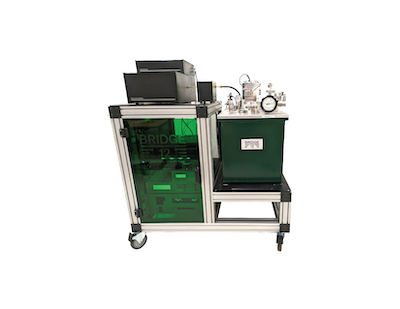
Small Footprint
The Bridge12 Q-Band EPR system is a compact spectrometer that will fit easily in any laboratory. It is based on a small, compact superconducting magnet with an integrated cryostat. The system uses only one cryohead for cooling. All electronics is housed in a small rack.
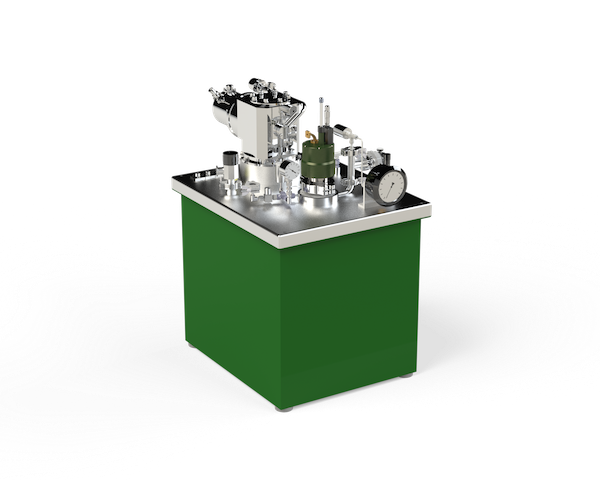
Dry Magnet with iVTI
The EPR system is based on a compact, liquid cryogen-free (dry) superconducting magnet with an integrated liquid cryogen-free variable temperature insert (iVTI). In its default configuration the magnet reaches a magnetic field of up 1.5 T (option for 3.5 T available) and the cryostat can reach a base probe well below 2.4 K. Being a dry system, the spectrometer can run 24/7 without worrying about when the liquid helium runs out for cooling.
The magnet has a very small, compact footprint and with a weight of just above 140 kg the magnet can be placed almost anywhere, even in a crowded lab environment.
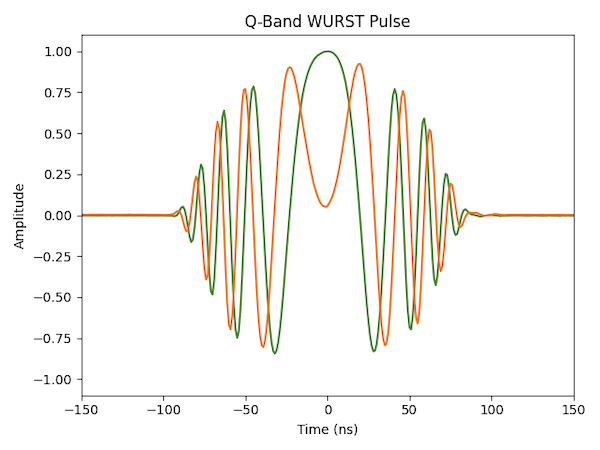
High-Power AWG Pulses
Microwave pulses are created by the Bridge12 X-IF bridge and upconverted to Q-Band frequencies using a frequency extension. The spectrometer is controlled by SpecMan4EPR. A powerful feature of SpecMan4EPR is its AWG engine. It easily allows even beginners to create the most sophisticated microwave pulse shapes. SpecMan4EPR supports digital downconversion filtering of the EPR spectral data.
The spectrometer comes with a 100 W solid-state Amplifier (optional 40 W). The circulator attachment can be easily detached to allow connecting EPR probes with a cryogenic pre-amplifier.
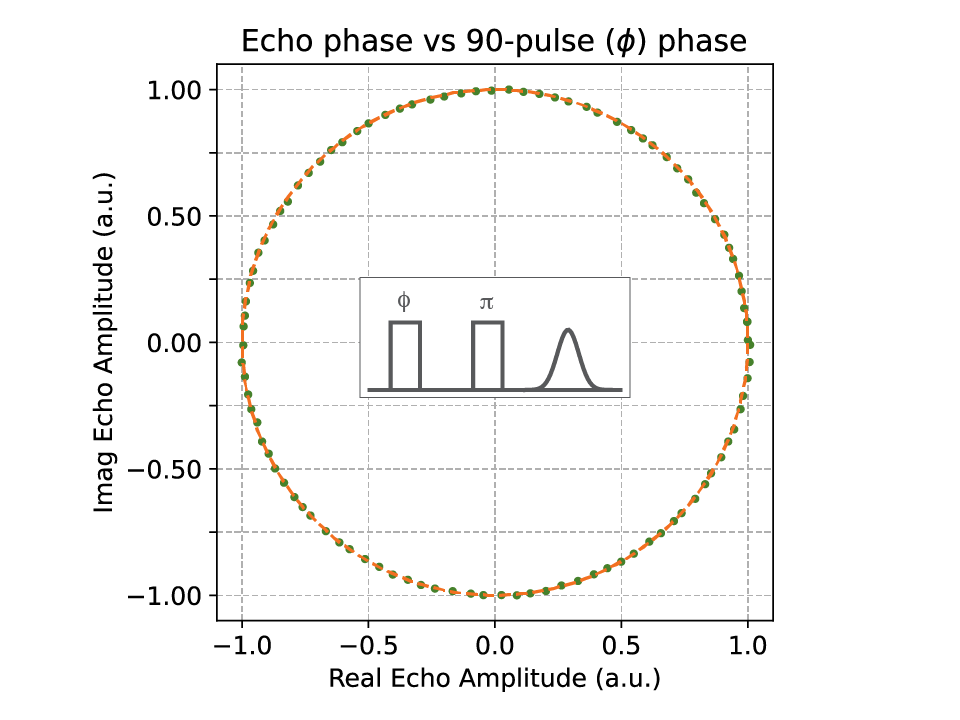
Excellent IQ Balance
Modern shaped pulses demand excellent phase and amplitude balance of the I and Q channel. The Bridge12 X-IF system uses high quality microwave components to deliver an excellent microwave performance. The figure to the left demonstrates this. Here, the phase of the first 90º degree pulse is continuously varied and the complex echo amplitude is plotted, resulting in a nearly perfect circle (see Ref. [1] for more details).
In combination with the digital demodulation the system any DC offsets are eliminated for nearly perfect performance. Any small phase imperfections can be removed using a CYCLOPS phase cycle, which can be easily implemented in SpecMan4EPR.
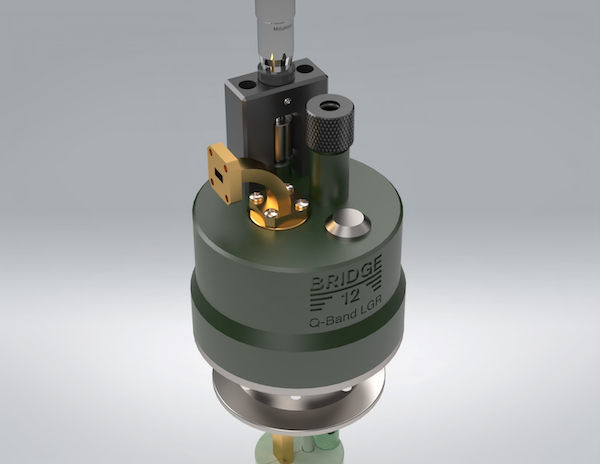
Bridge12 Q-Band LGR
The spectrometer comes with the Bridge12 Q-Band loop-gap resonator (B12TQLP-1.6), a probe head optimized for pulsed dipolar EPR spectroscopy (e.g. DEER/PELDOR, SIFTER, RIDME, DQC, etc) in cases where the sample amount is limited. The resonator can be operated from 2 K to room-temperature and is compatible with all standard EPR cryostats. The loaded Q of the resonator is < 85 (> 400 MHz bandwidth), with a B1e of > 6 G/√W.
The Bridge12 Q-Band spectrometer was developed under a Small Business Innovation Research (SBIR) Grant by the National Institute of General Medical Sciencies (NIGMS) of the National Institutes of Health (NIH).
Reference
- Endeward, Burkhard, Matthias Bretschneider, Paul Trenkler, and Thomas F. Prisner. “Implementation and Applications of Shaped Pulses in EPR.” Progress in Nuclear Magnetic Resonance Spectroscopy 136–137 (August 2023): 61–82. https://doi.org/10.1016/j.pnmrs.2023.04.003.
Technical Specifications
- Spectrometer Frequency: 34 GHz (typ.)
- Maximum pulse power: 100 W (40 W option available)
- Maximum duty cycle: 5 %
- AWG bandwidth: 400 MHz (higher bandwidths available)
- AWG resolution: 14 bit
- Digitizer sample rate 1.25 GS/s
- Digitizer resolution: 8 bit
- Magnet field range: 0 - 1.5 T
- Field homogeneity: < 25 ppm (10 mm DSV)
- Magnet weight: 140 kg
- Field resolution: 20 bit
- VTI temperature range: 2 - 325 K
- Cold bore diameter: 40 mm